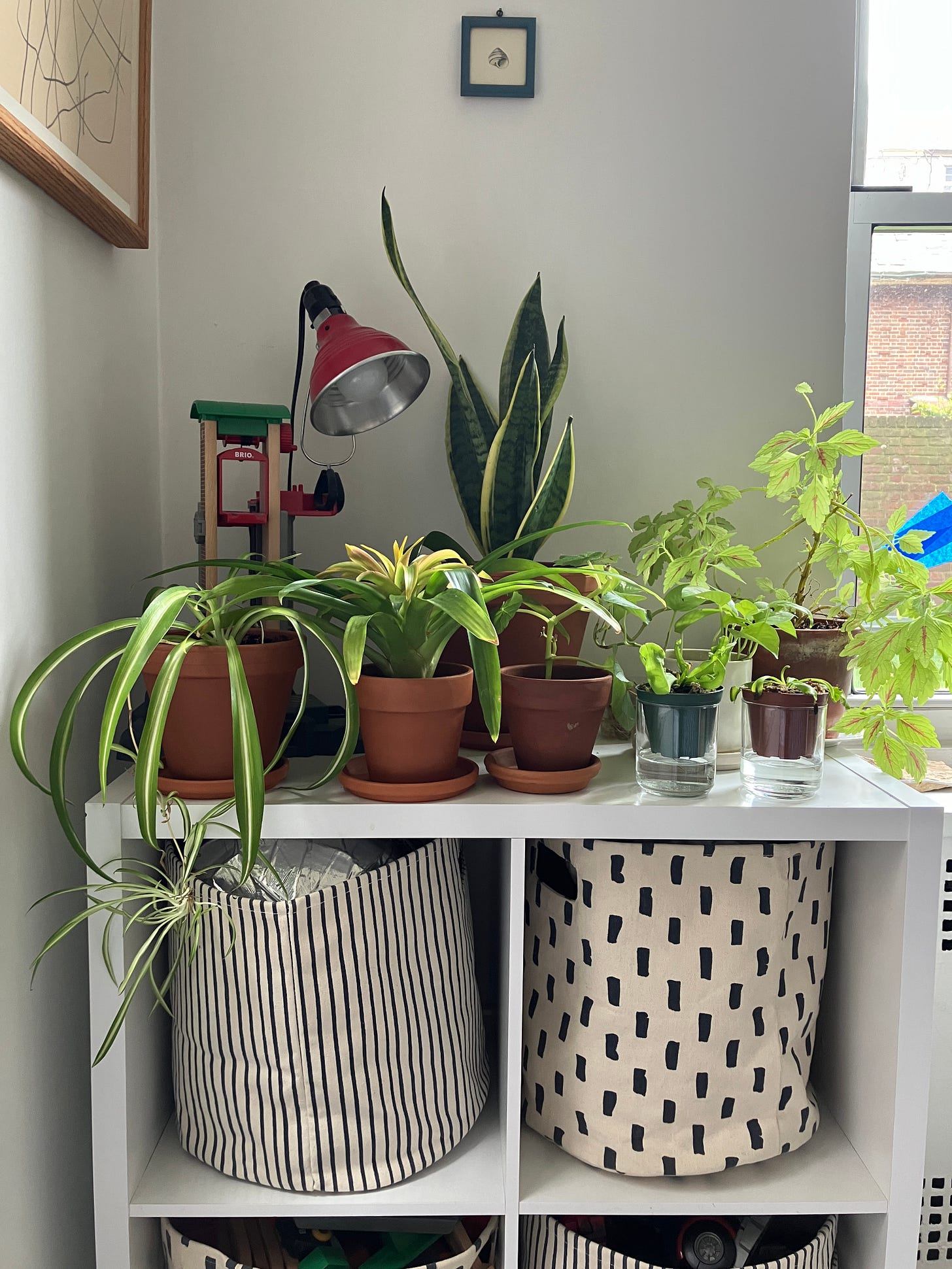Last year I ran an ‘ask me anything’ newsletter for my birthday, and as the anniversary of my birth approached this year, I decided to make this an annual tradition. So, last week I gave paid subscribers a chance to ask me their pressing questions about living small and sustainability. Below are their queries and my answers. I realized I immensely enjoy being in conversation with you guys, so I’ll be launching a way that we can chat more often in September—stay tuned.
One last thing: Last week’s post sparked some great conversation, so I am writing a follow-up about women who have a capsule wardrobe or an unofficial uniform. If you’d like to be a part of the story, please reply to this email.
Okay, onto the birthday Q&A (this one is long, so you may need to open it in a browser to read the whole post).
How does living small enable living large?
I love this question, but you also answered it. I remind myself that living small often results in more: More time doing things you love because you spend less time cleaning and maintaining your home. More money to save and spend because you’re not pouring it all into mortgage, rent, or maintenance of a larger home. You can chip away at debt faster, retire sooner or more comfortably, or travel more. And finally, more meaning. Freed of things you do not need or want, I believe homes are cozier and more personal. My family would have to give up a lot to afford a bigger home in New York City, so the urge usually passes, but who knows, a day may come when the pros of moving outweigh the cons?
Related reading:
How can I use a big hallway creatively?
Of course, all will all depend on the size and shape of the hallways, so, I encourage you to measure the “larger than avg” hallways to make sure they really are big enough to become a WFH space or more. Even if you can’t create a room within the large hallways, you can definitely build in storage–bookshelves, shallow cabinets, hooks, cubbies, the sky’s the limit. I made you a Pinterest board of hallway ideas to spark your imagination. One word of caution: Open storage can get overwhelming fast, so aim for storage with doors, like IKEA’s Pax system, or copy my friend
and hang some curtains to hide the clutter.How do you get kids on board with sustainability and quit paper towels?
Lead by example: If you act like composting is normal (cool even!) and you don’t think it’s icky, then your kids will be more likely to get on board. If you present the vegetarian meal with enthusiasm, they might not even realize there’s no meat. If you’re not constantly shopping, they won’t assume they can get new things all the time. As for curbing consumption, kids are always going to want plastic-y toys and will say that they’d rather watch TV than go for a walk outside. In those instances I just remain firm, and for the most part, I don’t think my kid feels deprived (and I occasionally let him buy junky toys at yard sales).
Re: paper towels. I still haven’t completely quit them, but here are a few things that helped me cut way back: 1) reading about how manufacturing paper towels is causing devastating deforestation motivated me to try harder 2) amassing a stash of reusable rags and microfiber cloths gave me an alternative and 3) and this is key: Putting the paper towels way out of reach in the back of a lower cabinet made me have to really consciously want to use one.
How do you deal with shoes in a small space?
Shoes are hard: I’m always nagging my husband (sorry, Weston!) to get rid of what I deem “duplicates” to no avail. When my son was younger, we were very minimalistic with kid shoes: Two pairs at a time–but as he’s gotten older they have indeed multiplied. We have a big basket near our door for the currently in rotation shoes and then a very basic cube shoe storage in the back of our shared clothing closet (similar to this) for less-worn pairs. For myself, I have a one-in-one-out policy that keeps things in check. I have debated the merits of something like these cabinets, but can’t quite convince myself to try it. Anyone want to persuade me?
If you’re looking to offload a few less-loved pairs, DSW stores accept shoe donations. I always wash/clean shoes before donating or handing them down, so that they’re more appealing and therefore more likely to have a second life.
How do you live sustainability within a limited budget?
I am naturally tidy, but I also believe it’s a skill that you can sharpen over time no matter what your baseline tidiness is. I think we’re sometimes told things about ourselves (or tell ourselves things about ourselves!) that aren’t necessarily true. Maybe you’re not naturally messy, maybe you just need better systems to make being tidy easier?
As for balancing sustainability/quality/cost, I find that buying secondhand solves them all: I can get better quality things for less money and they are inherently sustainable because they are previously used. I seriously buy everything used (short of underwear). When I am buying new, my budget often dictates what I can choose more than my desire to be sustainable or choose the highest quality. Spending beyond your means is never sustainable!
How do you deal with kid’s stuff in a small space?
I think owning less is the most essential thing you can do to manage the kid stuff in a small space. Another key to both toys and clothes in a small space is to ruthlessly edit as they mature out of things–and also to not let too many into the house in the first place! Our son plays in his room and our living room, but on the weekends we try to be out of the house as much as possible, so there’s not a ton of time he’s playing at home. I spent years as a houseplant killer, but my son got excited about indoor plants last year and we’re trying to keep them alive–they bring a lot of joy.
To the second question: We never had enough toys to properly set up a rotation–but it sounds like a lovely idea! Our son’s toys are all stored in two basic cube shelves with canvas Pehr bins (above). In the big truck phase, a bunch of those just lived on the floor, which was not ideal, but it was temporary. My son’s clothes are all stored in the three built-in drawers of his captain’s bed. When either of those gets too full, we prune out the less-loved things.
Read on for bedding picks, seasonal storage, lack of closets, a glimpse of my apartment from 10 years ago(!), and more…
Keep reading with a 7-day free trial
Subscribe to LIVING SMALL to keep reading this post and get 7 days of free access to the full post archives.










